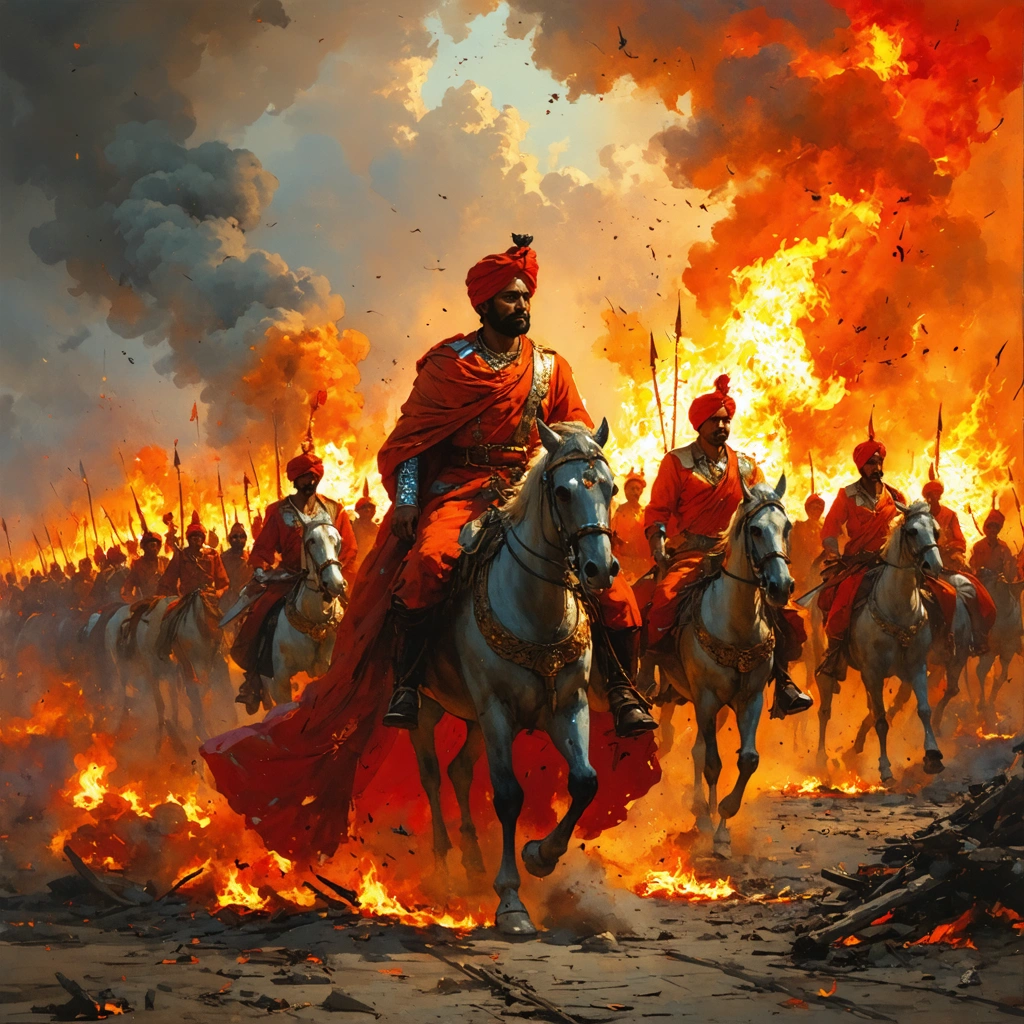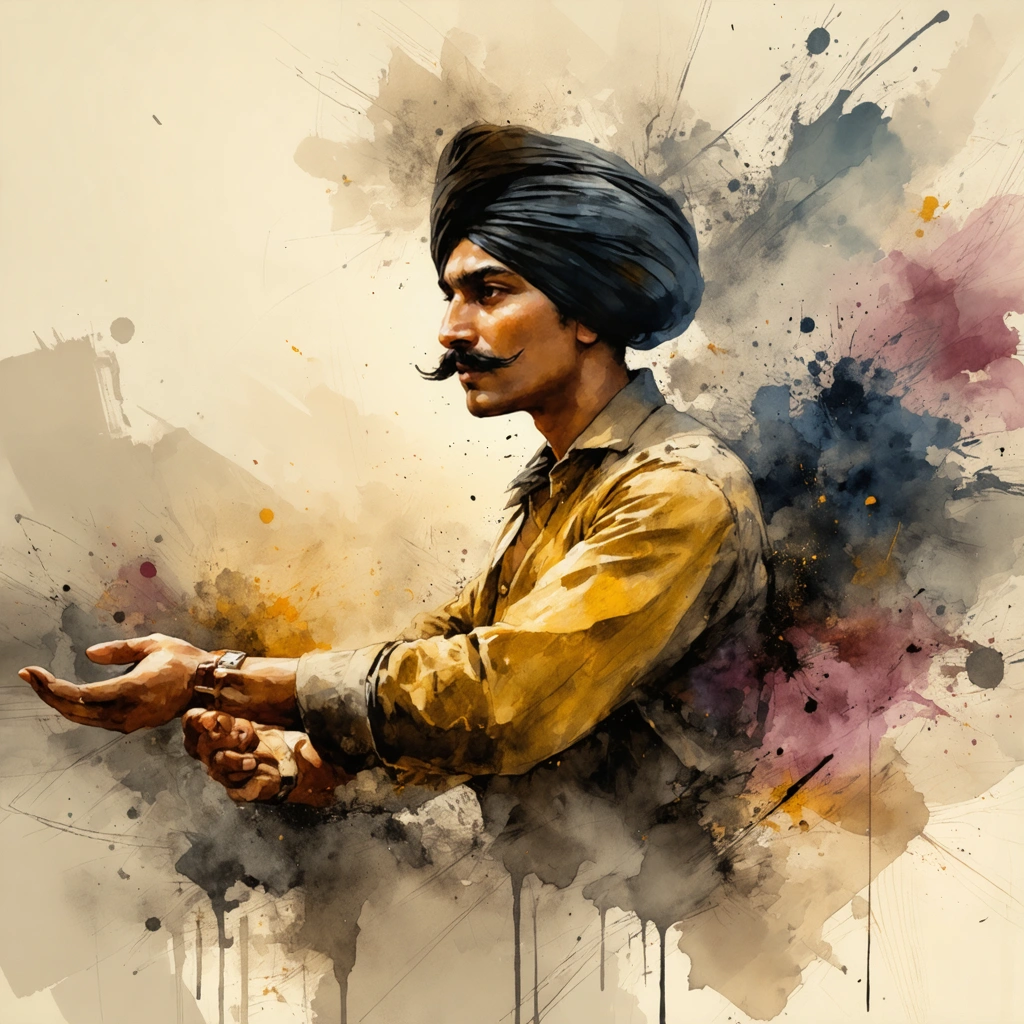
The Unheard Voices of India’s Freedom Struggle
When we think about India’s struggle for independence, names like Mahatma Gandhi and Jawaharlal Nehru often dominate the conversation. But beneath the surface of peaceful protests and political negotiations, there thrived a fierce undercurrent of revolutionaries who dared to dream of freedom through radical action. Their stories—etched in sacrifice, courage, and unyielding spirit—are crucial to understanding the full tapestry of India’s fight against colonial rule.
Have you ever wondered about the intense bravery behind the name Bhagat Singh? Or pondered the fearless resolve of Chandra Shekhar Azad, who vowed never to be captured alive? Perhaps you’ve come across the haunting question: Bhagat Singh ko fansi kab di gai—when was Bhagat Singh executed? These are not just trivia points; they are windows into a history pulsating with passion and patriotism.
There’s a paradox here. While the mainstream narrative celebrates nonviolent resistance, the revolutionary movement—often violent, always bold—played an equally pivotal role. Unfortunately, many of these heroes remain underappreciated, their stories confined to history books or overshadowed by more prominent figures. This introduction aims to bring their legacy to the forefront, to illuminate the complex, fiery spirit that fueled India’s revolutionary movements.
Why Revolutionary Figures Matter in Today’s India
India today stands as the world’s largest democracy, a beacon of cultural diversity and economic growth. Yet, the roots of this mighty nation are deeply embedded in sacrifice and struggle. Understanding the lives and actions of revolutionary leaders helps us appreciate the price paid for freedom and inspires a new generation to cherish and protect it.
Consider for a moment the intensity of the times during which these revolutionaries operated. British colonial rule was not just a political dominance; it was a system that suppressed voices, stifled dreams, and cracked down brutally on dissent. The courage of figures like Bhagat Singh and Chandra Shekhar Azad was not born overnight—they emerged from a furnace of oppression and injustice.
Bhagat Singh’s story, for instance, is more than just a tale of youthful rebellion. If you search for Bhagat Singh history Hindi, you’ll find a rich narrative of a young man who combined intellectual rigor with fearless activism. His writings and actions questioned not only British authority but also the methods of the Indian National Congress, stirring debates that still resonate today.
And what about Chandra Shekhar Azad? This revolutionary’s name itself means “free,” a fitting title for a man who literally fought until his last breath rather than surrender to the British. His life was a testament to unwavering commitment, inspiring countless others to pick up the mantle of resistance.
The Emotional Impact of Their Sacrifices
When you ask Bhagat Singh ko fansi kab di gai, the answer—March 23, 1931—often evokes a profound emotional response. At just 23 years old, Bhagat Singh’s execution symbolized the brutal cost of revolution. But far from extinguishing the flame, his death ignited a nationwide surge of patriotism.
These revolutionary figures were not just fighters; they were symbols of hope, resilience, and the relentless pursuit of justice. Their stories remind us that freedom is never free—it demands courage, conviction, and sometimes, the ultimate sacrifice.
What This Article Will Explore
This blog post will journey through the lives and legacies of some of India’s most iconic revolutionary figures. It will delve into:
- Bhagat Singh’s history—exploring his early life, ideological evolution, and the circumstances leading to his execution.
- The fearless exploits of Chandra Shekhar Azad, including his strategies and moments of defiance.
- The broader context of revolutionary movements in India, highlighting how these figures shaped and challenged the freedom struggle.
- A reflection on why remembering these revolutionaries remains vital for India’s present and future.
By the end of this article, you’ll gain a richer, more nuanced appreciation of the revolutionary spirit that helped carve India’s path to independence. Whether you’re a student of history, a patriot seeking inspiration, or simply curious about these heroic tales, there is much to uncover and celebrate.
So, let’s embark on this compelling exploration of sacrifice, strategy, and steadfastness—remembering those who dared to rewrite history, not with pens or votes alone, but with fearless hearts willing to face any consequence.

Revolutionary Figures in India: Celebrate the Leaders of India’s Revolutionary Movements
Who Were the Key Revolutionary Figures in India’s Struggle for Independence?
India’s freedom movement was shaped not only by political leaders but also by brave revolutionaries who took bold, often militant, steps against British colonial rule. These figures inspired generations with their courage, sacrifice, and unwavering commitment to India’s independence. Among the most celebrated revolutionary figures are Bhagat Singh, Chandra Shekhar Azad, and several others who left an indelible mark on Indian history.
Understanding these leaders helps us appreciate the diverse methods and ideologies that fueled the freedom struggle, ranging from non-violent civil disobedience to armed resistance.
Bhagat Singh: A Symbol of Youthful Revolution
Bhagat Singh is one of the most iconic revolutionaries in Indian history. His story is deeply embedded in the national consciousness, particularly in how he symbolized youthful defiance against colonial oppression. To grasp his impact fully, exploring Bhagat Singh History Hindi offers rich detail about his early life, motivations, and revolutionary activities.
Born in 1907 in Punjab, Bhagat Singh was influenced by the nationalist atmosphere around him. He became famous for his involvement in the Lahore Conspiracy Case, which included the killing of British officer John Saunders (mistakenly believed to be James Scott), as a protest against the death of Lala Lajpat Rai.
Bhagat Singh’s philosophy combined Marxist ideas with Indian patriotism, and his execution galvanized countless Indians to intensify their fight for freedom.
When Was Bhagat Singh Executed? (Bhagat Singh Ko Fansi Kab Di Gai)
The question Bhagat Singh Ko Fansi Kab Di Gai is frequently asked by those studying India’s revolutionary history. Bhagat Singh, along with Rajguru and Sukhdev, was sentenced to death by hanging on March 23, 1931. This date is commemorated annually as Shaheed Diwas (Martyrs’ Day) to honor their sacrifice.
Their execution was a pivotal moment in the freedom struggle, sparking widespread protests and further uniting Indian people against British rule.
Chandra Shekhar Azad: The Fearless Revolutionary Leader
Chandra Shekhar Azad is another towering figure in India’s revolutionary history. Known for his audacity and leadership, Azad played a crucial role in organizing armed resistance against the British. He was a mentor and close associate of Bhagat Singh, and together they inspired many young Indians to join the freedom movement.
Azad’s philosophy was centered on the idea that India’s independence could only be achieved through direct action and sacrifice. He famously vowed never to be captured alive by the British and kept his promise by ending his life in a shootout in 1931.
Key Contributions of Chandra Shekhar Azad
- Leadership in the Hindustan Socialist Republican Association (HSRA), a revolutionary organization aiming to overthrow British rule through armed struggle.
- Participation in the Kakori Train Robbery of 1925, which aimed to fund revolutionary activities.
- Inspiring youth through his fearless attitude and dedication, motivating future generations of freedom fighters.
Why Are These Revolutionary Figures Still Celebrated Today?
Revolutionaries like Bhagat Singh and Chandra Shekhar Azad are celebrated not only for their heroic deeds but for their ideals and vision of a free India. Their stories teach us about courage, sacrifice, and the power of conviction. Moreover, their legacy continues to inspire contemporary movements for justice and human rights.
These figures also remind us that India’s independence was achieved through a complex blend of strategies, including revolutionary activism alongside non-violent resistance led by figures like Mahatma Gandhi. Understanding this multifaceted struggle helps foster a more nuanced view of India’s history.
How Can One Learn More About These Revolutionary Leaders?
To delve deeper into the lives and impact of these revolutionaries, consider exploring the following resources:
- Books and Biographies: Many comprehensive biographies detail Bhagat Singh’s life, including those written in Hindi to provide cultural and linguistic context.
- Documentaries and Films: Several documentaries and movies have been made about Bhagat Singh and Chandra Shekhar Azad, offering visual storytelling that appeals to a broad audience.
- Historical Archives: Visiting archives or online repositories can provide original letters, trial documents, and photographs.
- Educational Websites: Websites dedicated to India’s freedom struggle often feature detailed timelines, essays, and interactive content.
Conclusion
Celebrating revolutionary figures like Bhagat Singh and Chandra Shekhar Azad is crucial to understanding India’s fight for independence. Their courage, sacrifice, and strategic approaches offer valuable lessons on patriotism and resilience. By exploring topics such as Bhagat Singh History Hindi, the circumstances around Bhagat Singh Ko Fansi Kab Di Gai, and the life of Chandra Shekhar Azad, we not only honor their memories but also keep their revolutionary spirit alive for future generations.


